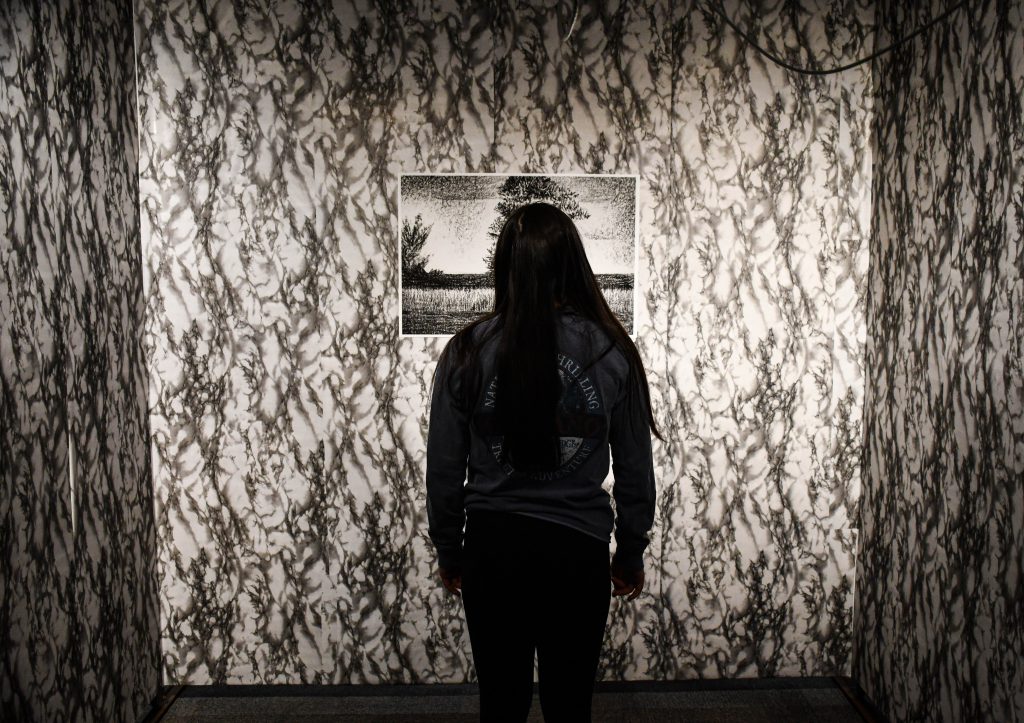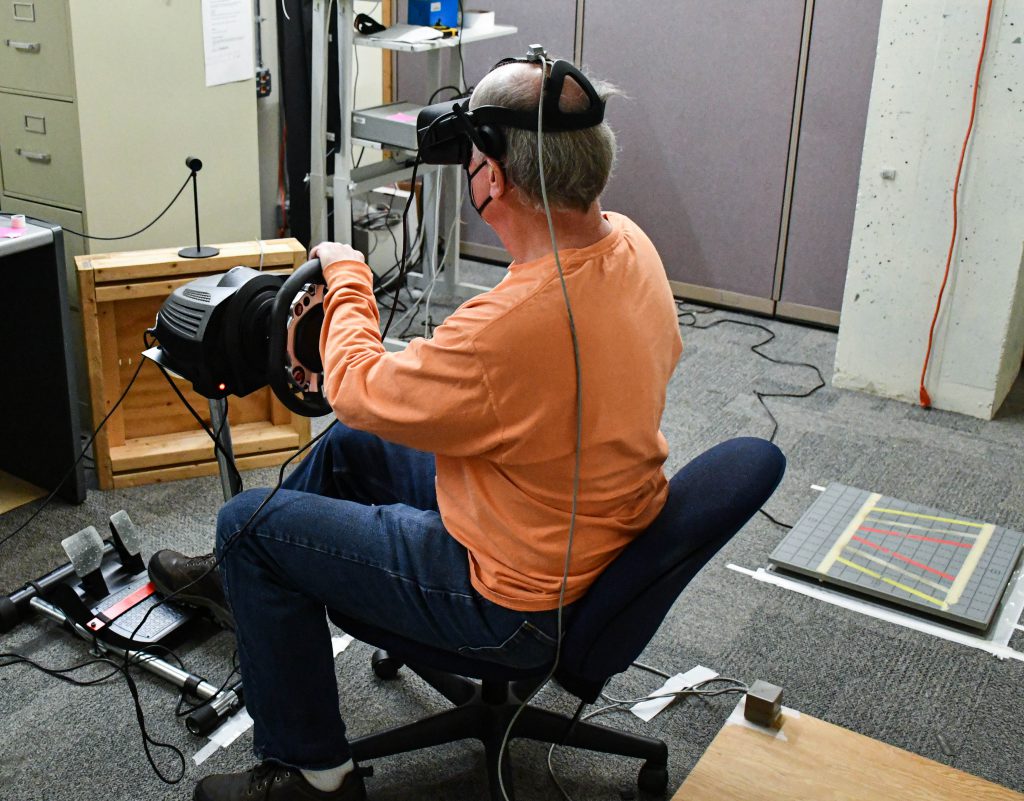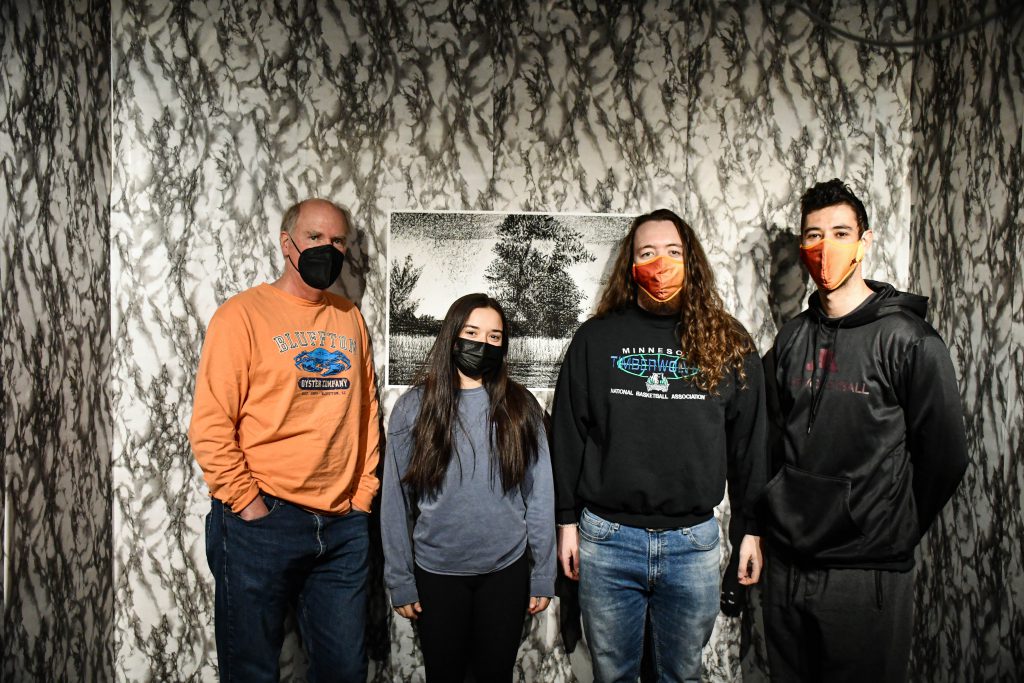Why is car sickness a problem for some people but not for others? Why can our bodies easily able to adapt to being on the open water? It’s all a matter of perception, as researchers in the U of M’s Affordance Perception-Action Laboratory (APAL) will gladly share. Pronounced like “apple”, the lab has earned respect and world-renown for its research within the field of perceptual motor control. As lab director Tom Stoffregen, PhD, explains, APAL researchers don’t study perception and don’t study muscle contractions. They study how the two work together, while relating to numerous real-world scenarios. Continue reading to learn more about the influential work of APAL.
Head mounted displays
Among APAL’s research emphasis areas is the science behind cybersickness and head-mounted displays, a technology that includes the fast-growing virtual reality (VR) headset. Since the 90’s, the issue of “cybersickness” has persisted among some VR users. Over 30 years, Dr. Stoffregen and his lab have published more than 50 research studies exploring why people get sick while using head mounted displays. Their research can predict who is most likely to get sick, based on how their body moves. APAL’s current research into virtual reality has participants stand on a plate equipped with sensors and read off of a piece of paper posted on the wall directly in front of them. The lab team tracks the participant’s movements to understand how their body will react to the head mounted display. After that, while using the headset – the current study consists of a car-racing experience – the lab monitors head movement by using various sensors. In large part due to Dr. Stoffregen’s research, the VR industry has acknowledged the issue of cybersickness and it remains a hurdle. By understanding the certain people who get sick while using head mounted displays, APAL is able to identify that the same people are also prone to car sickness and seasickness.
APAL’s current research into this topic is a collaborative study with the University’s Computer Science program, the result of an NSF (National Science Foundation) grant. The researchers in Computer Science are responsible for creating the virtual reality environments and researching how developing VR technology can help to mitigate cybersickness, whereas APAL is focusing on the perceptual control of movement in VR, inspired by their research. The goal is to leverage this research into learning how virtual environments can be redesigned to be less likely to cause sickness.
Sea sickness/sea legs
Another area of focus within APAL is researching how people’s bodies move and react to being on high seas. When someone is able to gain their footing on a ship and perceive how the ship is moving relative to the earth, they are then able to avoid becoming sea sick. That is what Dr. Stoffregen refers to as “getting your sea legs.” Stoffregen has seen this process occur even on retirement cruises, where passengers as old as 90 are able to adapt to the unpredictable motion of the ship despite having struggles with mobility on land. Stoffregen mentioned how sea voyages have even been prescribed by physicians as a training regimen with real physical effects.
Affordance

A final subject APAL emphasizes is affordance, which Dr. Stoffregen describes as, “people’s knowledge about their own capabilities.” To better understand what affordance means, he uses an example of a 1-year-old child approaching stairs. That child knows whether they have the ability to make it up those stairs or not. Both humans and non-humans exhibit that knowledge. A current study, in collaboration with researchers in Turkey, was just submitted by APAL that looked at affordance in 80 high school aged athletes. Along similar lines, Danilo Arruda, a graduate assistant and PhD student in APAL, is studying volleyball athletes who are from his home country of Brazil. This type of creative research is how APAL commonly studies the subject of affordance.
Meet the team
Danilo Arruda, George Bailey, and Eugenia Garza are all researchers in the lab and members of Dr. Stroffregen’s team. Arruda is in the process of gaining his PhD degree, focusing on perceptual motor control and learning. Along with an academic emphasis on volleyball, Arruda enjoys playing and instructing the sport as well.
George Bailey, a third year PhD student, is also in the process of earning his doctorate degree, specializing in Motor Learning and Control. Bailey also has a background in sports, previously playing baseball on his University’s team as well as competing in a rugby league.
The third research assistant in APAL is Eugenia Garza, a freshman pursuing a degree in Kinesiology. Just like Arruda and Bailey, Garza is deeply invested in sports as a figure skater on Mexico’s National Team. Garza’s work, which is funded by a grant from the Undergraduate Research Scholarship Program, will contribute to APAL’s research into virtual reality simulator sickness.
Click here to learn more about APAL’s outstanding work.





